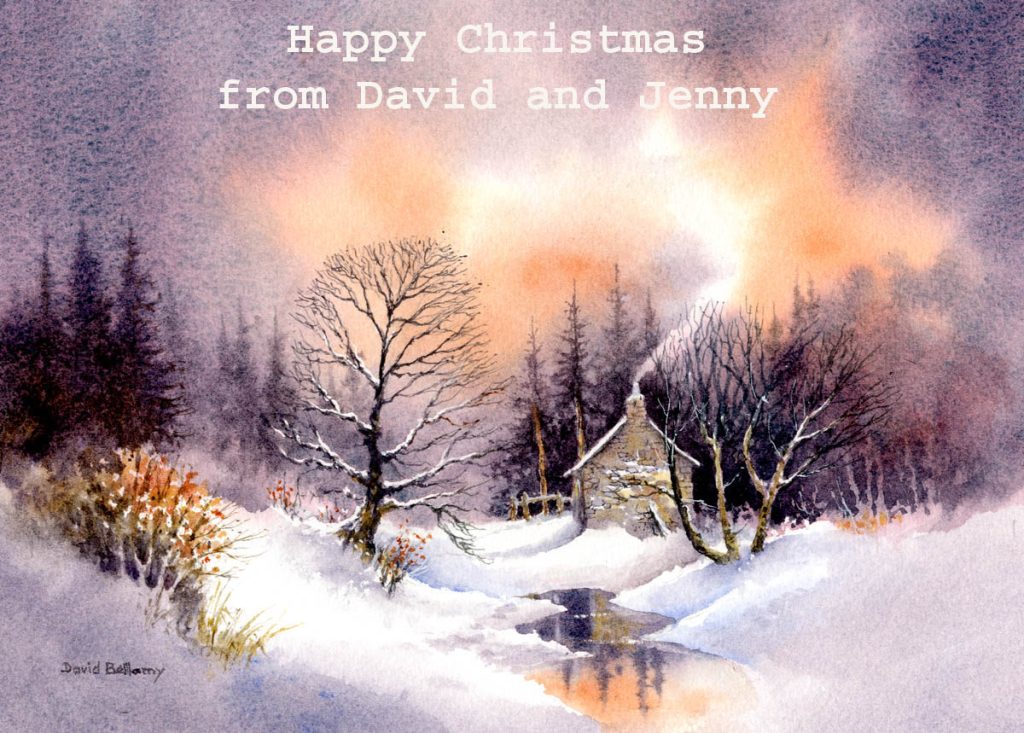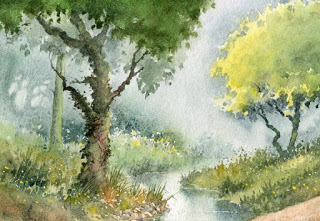I don’t know about you, but I find December is always a mad and chaotic rush around trying to keep normal life and business functioning while coping with the extra tasks of Christmas. I’ve just returned from town whtere I found the toy shop far more interesting for buying presents than the adult ones!

This scene I came across while stumbling through the snow-bound woods near the Bachhowy River a short distance from home. That was a long time ago and the cottage was abandoned, but to give it a sense of life I added rising smoke. The sky is mainly quinacridone Sienna and moonglow, with some touches of French ultramarine. I used masking fluid to reserve the snow-laden branches. The scene was more or less as I have created it, complete with puddle in the foreground, although I have changed the sky considerably.
I shall be enjoying a far from relaxing Christmas in the company of my rather energetic little grand-daughters in Pembrokeshire, but I’m sure we’ll have a great time, and I wish you all a very Happy Christmas and good health and much success with your creative activities in the New Year.




